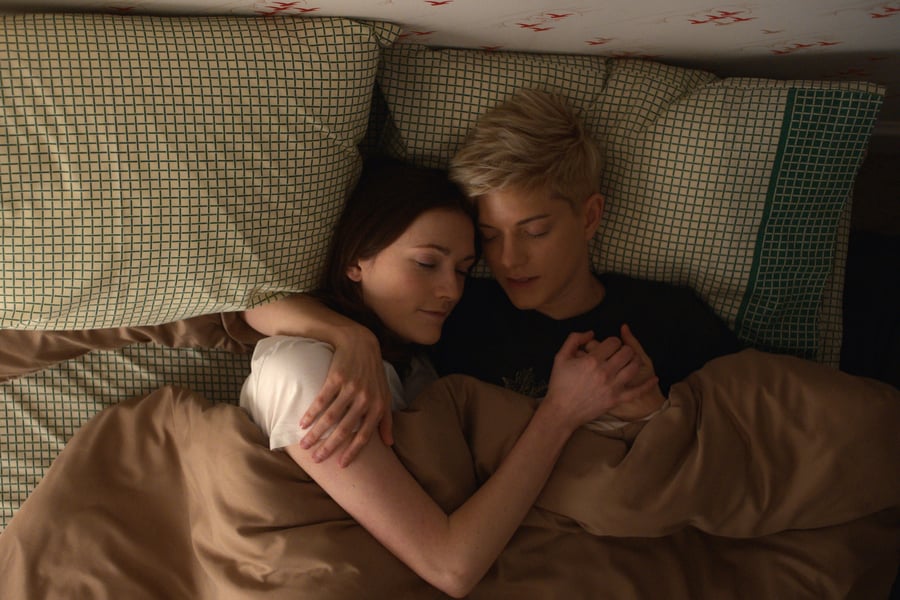When Netflix got into the original programming business, it presented itself as a safe space for cancellation-scarred viewers. Netflix shows wouldn’t necessarily run forever, but their creators would at least be given warning to wrap up the story. Eventually, though, the almighty algorithm decreed that long runs were a bad thing — particularly the ones that weren’t aiming for a Stranger Things-sized audience — and the streamer forced many shows to wind down with a third season. And now, we’re in a moment where Netflix has begun abruptly canceling shows after a single season, with stories nowhere close to being finished.
So it seems like something of a miracle to even get a second, albeit final, season of Feel Good. A dramedy about the messy romance between recovering addict and comedian Mae Martin (played by the real Mae Martin, who created it with Joe Hampson) and schoolteacher George (Charlotte Ritchie), its first season was a real gem. But the show seemed much too small and quirky to survive in the more ruthless, blockbuster-oriented environment Netflix has cultivated over the last few years — even if its entire production budget is probably lower than what the hats cost for a single episode of Shadow and Bone.
At the same time, Feel Good Season Two strains on occasion to say everything it wants to about these characters and their relationship within the remaining space allowed, as if the two-minute warning light came on in a club while Mae was just getting warmed up. These concluding six episodes seek to cover a lot of ground: Mae’s addiction and the buried trauma that helps fuel it, George’s sexuality, Mae’s gender identity(*), how each of them get along with their parents, and the state of both their careers, among many other things.
(*) In real life, Martin recently came out as non-binary. They have put the fictionalized Mae a bit further behind on a similar journey: It’s a running gag that other characters keep misgendering Mae, who isn’t sure whether to feel insulted or inspired by this.
It’s a lot to squeeze into a short season with short episodes, and parts of it can’t help feeling rushed. But much more of it works than would seem possible under these conditions, and in many ways the second season is even more satisfying than the first.
Season One focused almost entirely on Mae and George’s romance, in particular the way that George became Mae’s newest addiction, while the previously straight George fretted over how to tell friends and family about Mae. Season Two expands its scope a bit, not just in how often Mae travels between George’s home in England and her parents’ house in Canada, but in how many characters it’s tracking. George’s weird flatmate Phil (Phil Burgers) goes on a quest to find his estranged father, and in the process becomes very attached to Mae’s mother (Lisa Kudrow) and father (Adrian Lukis). Anthony Stewart Head pops up as George’s selfish father, who seems like he’d get along well with the character Head plays over on Ted Lasso, the obnoxious mogul Rupert Mannion. George explores the limits of both her sexuality and her wokeness with the help of fellow teacher Elliott (Jordan Stephens), while Mae reconnects with old friend Scott (John Ross Bowie, terrific in a more dramatic role than he usually gets to play), a comedian who’s also the key to unlocking some of Mae’s past trauma. And both leads are given opportunities to reinvent their careers, depending on how much they’re willing to change to do it.
So there’s a lot more going on, yet most of it works because the core characters were so well established in Season One. The George material in particular is a significant improvement, since so many of her earlier stories were pitched more broadly than the rest of the show, as she panicked about coming out of the closet (and literally shoved Mae into one). She feels more well-rounded, even as Ritchie is still carrying the bulk of the comic workload in a funnier overall season, while Mae’s portions of the show tend to be heavier by design. (A frustrated George, explaining to a disapproving Elliott why she prefers porn to the bleak documentaries he likes: “I just wanted to watch a bishop smack a nun in the pussy with a Bible, OK?”)
Love Music?
Get your daily dose of everything happening in Australian/New Zealand music and globally.
And Martin the performer continues to hold little back in this painful but cathartic story. When a doctor suggests a PTSD diagnosis, Mae replies, “People are obsessed with trauma these days. It’s like a buzzword, like people love talking about trauma. It’s overdone, you know?” There’s certainly no lack of misery and trauma in modern television, but when it’s in a story told as specifically and fearlessly as this, and with the right sense of when we need to laugh instead of cry, it works beautifully.
Perhaps because Martin and Hampson have so much to cover and so little time in which to do it, Feel Good concludes with more of an ellipsis than a period. Our heroes land in a place that seems emotionally satisfying enough, even though it resolves only some of what’s been troubling them, both apart and together. But at least it’s an ending, which is more than a lot of other recent Netflix shows have been granted.
“I don’t know if anyone has ever told you this,” Phil says at one point, “but you guys are a lot as a couple.” There’s a lot going on in both seasons of Feel Good, and thank goodness we got as much of it as we did.
The final season of Feel Good premieres June 4th on Netflix. I’ve seen all six episodes.
From Rolling Stone US



































